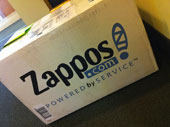When Should You Nickel-and-Dime Your Customers?
Every manager who’s ever set a price has had to wrestle with whether to “partition” the elements — charge separately for such things as shipping, installation or warranties — or to bundle everything into one price. Here’s how to decide.
Topics

Image courtesy of Sean M. Brown
If you’ve spent time at an airport recently, you’re likely to have overheard a conversation between a surprised non-frequent flyer and a ticket agent about fees for checked luggage. That exchange may have been a loud one if the airline was charging $25 (or more) per bag. Although charging separately for luggage allows airlines to advertise lower ticket prices, potentially increasing sales, incorporating baggage fees into the ticket price might increase the satisfaction of customers en route as well as raise the retention rate of check-in counter agents. And therein lies the rub.
When should a company “nickel-and-dime” customers by charging separately for various extras, and when is it better to keep things simple by combining all of the charges into one total price?
Before answering, consider another example: The price of wall-to-wall carpeting may or may not include the cost of installation or delivery to the customer’s home. Given that most customers neither own a vehicle large enough to transport a living-room–sized piece of carpeting nor have any desire to rent one, delivery is, for all intents and purposes, a required component of the purchase. If nearly all customers will be buying both carpeting and delivery, should the price of the carpeting include delivery or should the company charge for it separately?
The Leading Question
When should companies bundle charges, and when should they list them separately?
Findings
- One size does not fit all. How you answer the question depends on many factors, including industry norms.
- If you don’t follow industry norms, you will be at a disadvantage when people quickly comparison shop.
- But moving away from the pack — for instance not charging passengers to check bags — could give you a competitive advantage.
On the one hand, assigning a separate dollar value to the delivery component would decrease the price per square foot that the company charges for their carpeting, making its prices appear more competitive when customers comparison shop. Charging separately for delivery also might increase the perceived value of the delivery service to customers and discourage absenteeism when the delivery truck is scheduled to arrive.
References (36)
1. V.G. Morwitz, E.A. Greenleaf and E.J. Johnson, “Divide and Prosper: Consumers’ Reactions to Partitioned Prices,” Journal of Marketing Research 35, no. 4 (1998): 453-63.
2. A. Daripa and S. Kapur, “Pricing on the Internet,” Oxford Review of Economic Policy 17, no. 2 (2001): 202-216.





Comments (4)
almcfarland
Charvak Karpe
Babar Bhatti
A. Oyenuga